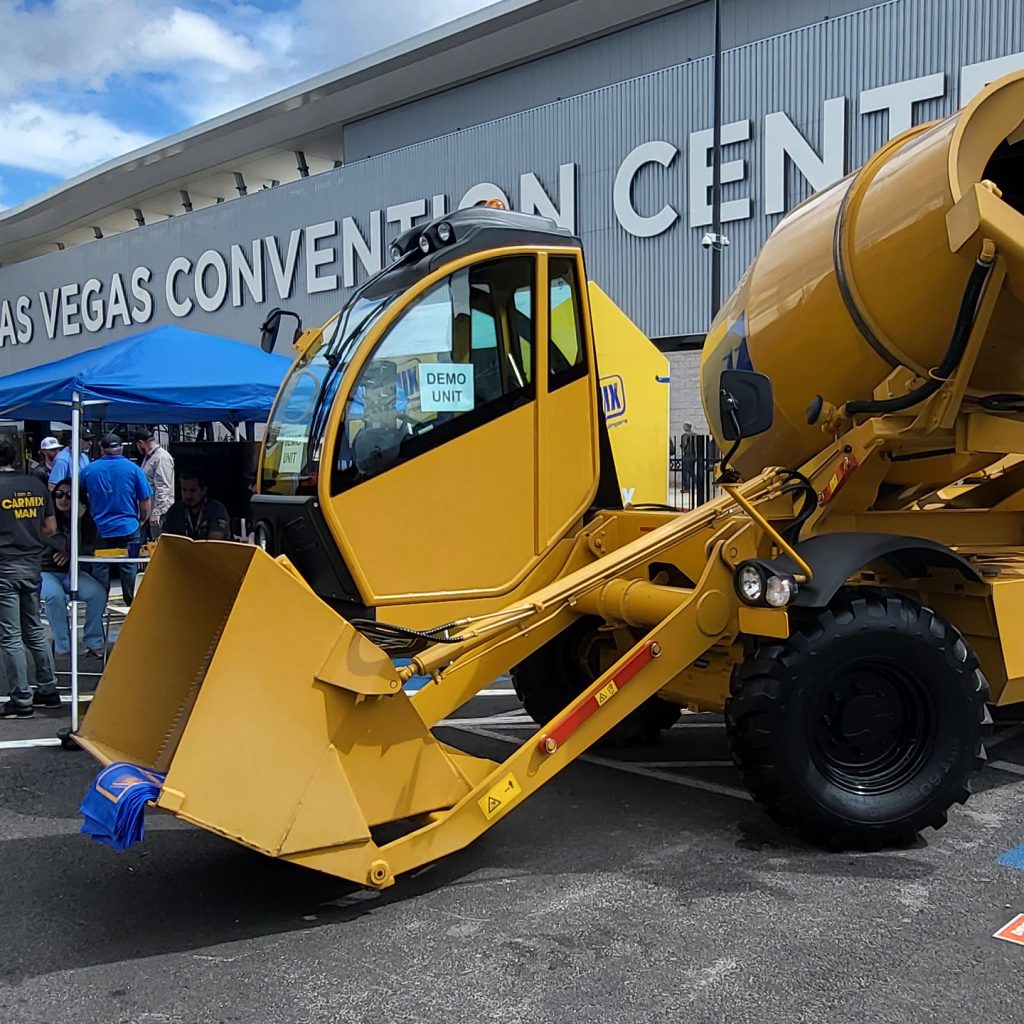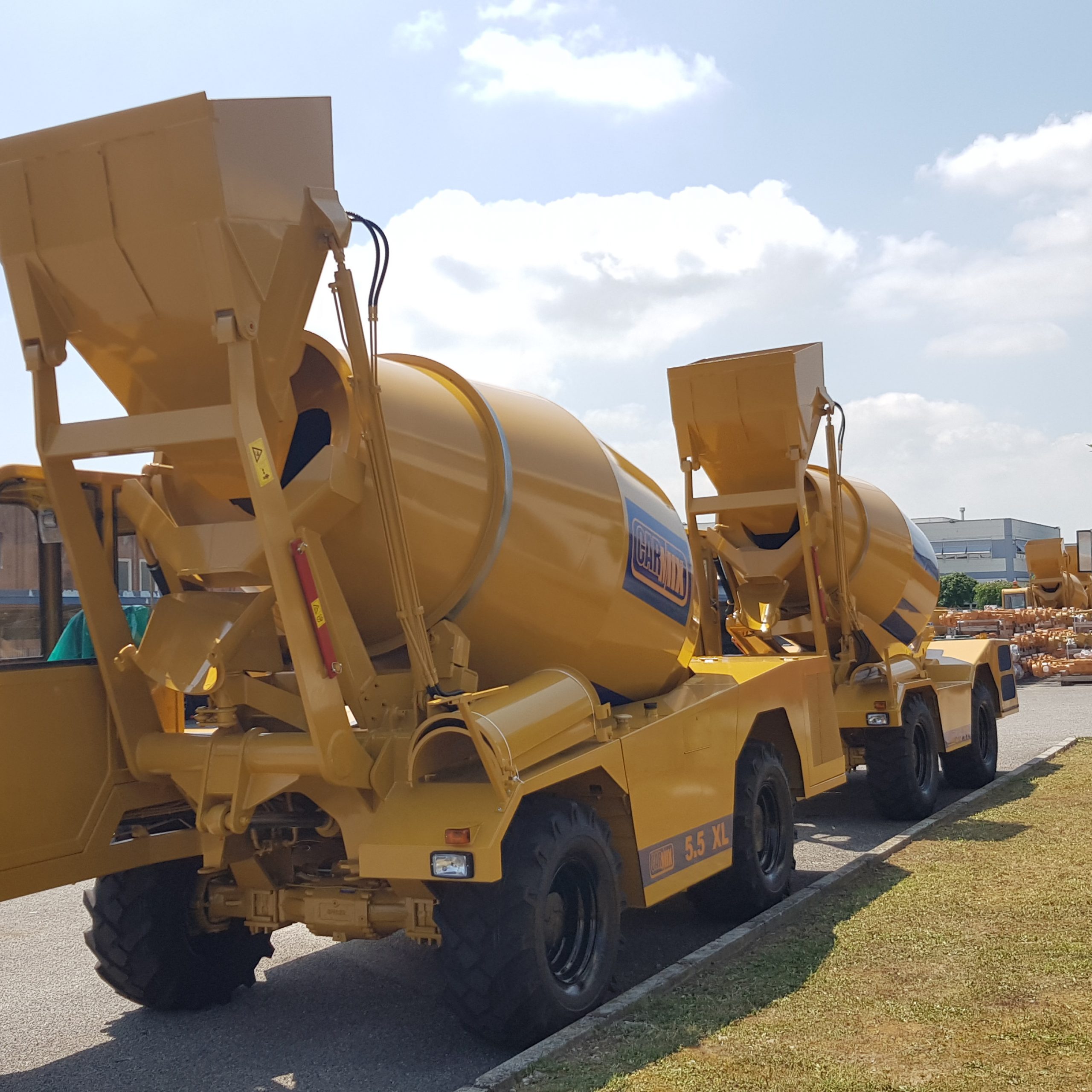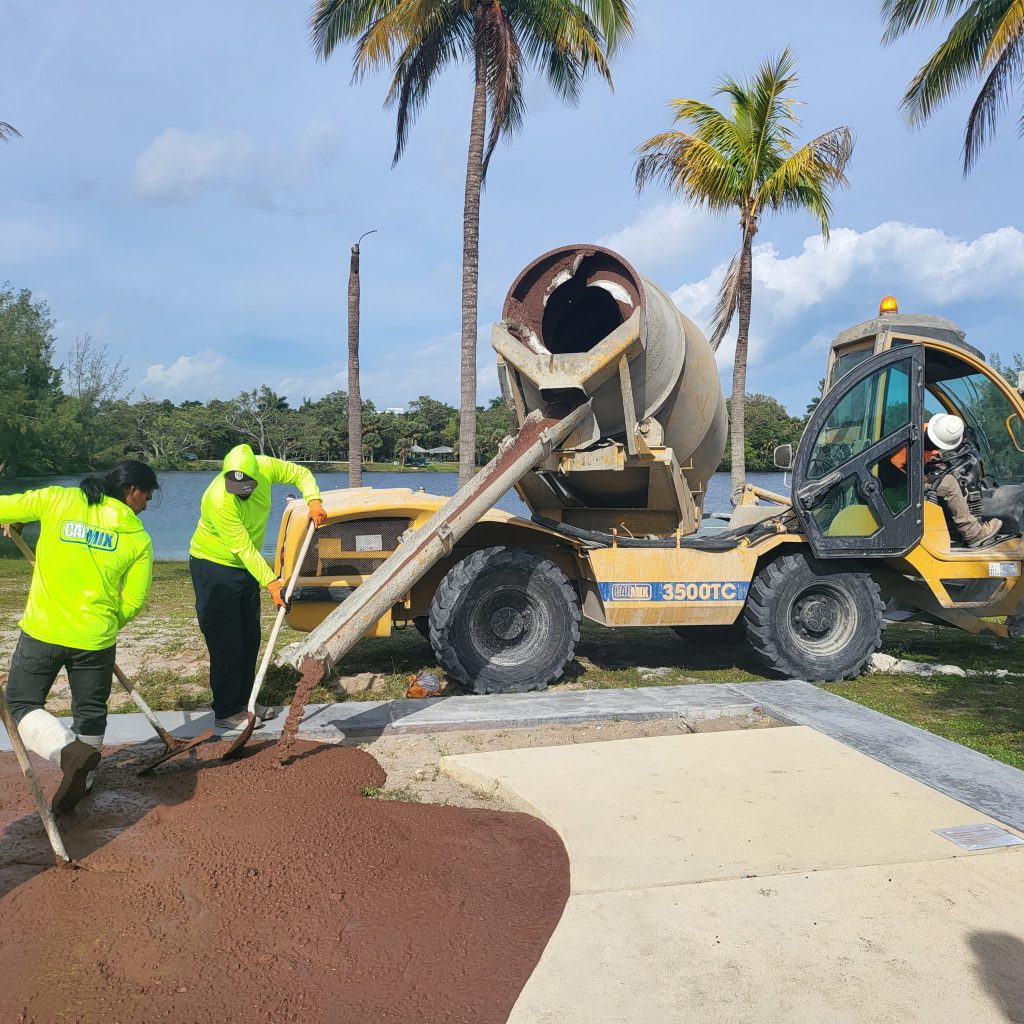Self loading mobile concrete mixer VS Volumetric concrete mixer
There are various types of equipment that can be used to prepare high quality concrete industrial amounts. Let’s have a look at the two most interesting concepts of on site concrete production equipment and compare them to see which is a better choice?
Concrete mixers are essential tools for construction projects of all sizes, allowing contractors and builders to mix and pour concrete quickly and efficiently. Two popular types of concrete mixers are self-loading mobile concrete mixers and volumetric concrete mixers.

Self-loading concrete mixers are designed to mix and transport concrete combining the functions of a batching plant and mixer truck. They feature a built-in mixing drum, allowing contractors to load raw materials into the mixer and then transport the mixed concrete to the job site in the same machine.
Volumetric concrete mixers are also designed to mix concrete on site, however, they are not equipped with a loading device. They feature separate compartments for each raw material, which are mixed together in precise proportions to create the desired concrete mix.
Both types of concrete mixers have their advantages and disadvantages, and the choice between them will depend on the specific needs of the project. In this article, we will compare and contrast self-loading concrete mixers and volumetric concrete mixers, discussing the pros and cons of each and helping readers determine which type of mixer is best suited for their particular construction project.
Let’s first start with a Volumetric concrete mixer
This type of equipment is presented on the US market by the following brands:
- Zim-Mixer volumetric concrete mixers by Zimmerman Industries, Inc.
- BAY-LYNX volumetric concrete mixers
- Cemen Tech Inc. with their Cementech concrete mixers
- HOLCOMBE mixers
- ProAll mixers
- Omega Concrete Mixers
There are both local US made and foreign volumetric mixers available on the market.
Volumetric concrete mixers are unique in that they mix concrete on-site and can produce custom mixes to meet the specific needs of a project. Here’s how they operate:
- Raw Materials Storage: Volumetric mixers have separate compartments for storing each of the raw materials needed to create the concrete mix, including cement, sand, gravel, and water.
- Mixing: Once the raw materials are loaded into the mixer, the machine uses a conveyor or auger to transport the materials to the mixing chamber, where they are combined in precise proportions.
- Water Addition: After the raw materials are mixed, the required amount of water is added to the mix.
- Mixing Continued: The mixer continues to mix the concrete until it reaches the desired consistency and is ready to be poured.
- Dispensing: The mixed concrete is then dispensed from the mixer into a waiting truck or directly into the project site.
Volumetric concrete mixers are equipped with advanced controls that allow for precise measurement and monitoring of the raw materials and the mix consistency. This makes it possible to create custom mixes on-site, ensuring that the concrete meets the specific needs of the project. Additionally, volumetric mixers can be operated remotely, allowing for greater flexibility and efficiency on the job site.
The average capacity of a volumetric concrete mixer can vary depending on the specific model and manufacturer. However, most volumetric mixers have a capacity ranging from 8 to 12 cubic yards (6 to 9 cubic meters) of concrete per load. Some larger models may have a capacity of up to 14 cubic yards (10.7 cubic meters) per load.
It’s worth noting that one of the advantages of a volumetric mixer is its flexibility in producing custom mix designs on site. This means that the capacity can be adjusted based on the specific needs of the project.
As we can see, volumetric concrete mixers are a great tool for a certain type of projects, but apart from the obvious benefits, they have their own drawbacks which we will discuss later in the article.
Now let’s talk about self loading mobile concrete mixers
This concept is presented in the USA by Carmix brand which is a leading manufacturer of such equipment worldwide. It is engineered and produced in Italy for over 40 years.

Carmix is designed to load, mix and transport concrete on-site. Here’s how a Carmix mixer typically works:
- Loading: The Carmix mixer is loaded with raw materials, including cement, sand, gravel, and water, using a built-in loading shovel system.
- Weighing: compliance with a mix design is ensured by using a precise load cells based electronic weighing system.
- Mixing: The raw materials are mixed together inside the mixer using a rotating drum. The mixer features a patented double-cone mixing drum that ensures consistent and homogenous mixing of the concrete.
- Mobility: Once the mixing is complete, the mixer can be driven directly to the pour site.
- Pouring: The mixed concrete is then dispensed from the mixer either into a waiting truck or directly onto the pour site with the help of discharge chute extension. An all wheel drive system with crabwalk and other steering modes, as well as a 300 degrees rotating drum allows Carmix to deliver concrete exactly where it is needed in most cases without the need for additional equipment such as concrete pump.
Carmix mixer is designed to be operated by a single operator and features advanced controls that allow for precise measurement and monitoring of the raw materials and the mix consistency. Additionally, the mixer is equipped with 4-wheel drive and 4-wheel steering, allowing it to easily navigate rough terrain and tight spaces on job sites. Overall, the Carmix mixer is a versatile and efficient solution for all sized concrete projects.
Two concepts might seem the same, but they are not and let us try to explain why!
Volumetric concrete mixers and self-loading mobile concrete mixers are both popular choices for contractors who need to mix and pour concrete on-site. However, there are some key differences between the two types of mixers. Here are a few:
- Mixing Method: Volumetric mixers carry aggregates with them and use separate compartments for each raw material and mix them together to create the desired concrete mix. Carmix mixers, on the other hand, load aggregates at the jobsite and use a rotating drum to mix the raw materials together and produce concrete.
- Capacity: Volumetric mixers typically have a larger capacity, ranging from 8 to 12 cubic yards per load, while Carmix mixers generally have a smaller capacity of around 4 to 5 cubic yards per load. However, a very important aspect is that once a volumetric mixer uses all the aggregates it carries onboard, it will have to return to base to load up with aggregates with the help of a front loader. Carmix on the other hand does not need any additional equipment and can produce 4 cubic yards of concrete every 20 minutes for as long as aggregates are available on the jobsite.
- Loading: Volumetric mixers require separate costly equipment, such as an excavator or a front loader to load the raw materials into the mixer. Carmix mixers, on the other hand, are self-loading and can load the raw materials using a built-in bucket.
- Maneuverability: Carmix mixers are typically more maneuverable than volumetric mixers due to their smaller size, outstanding off road capabilities and 4-wheel steering system. This makes them ideal for use on remote job sites with limited space or rough terrain.
- Customization: Volumetric mixers can produce custom mixes on-site, allowing for precise control over the mix and the ability to adjust the mix as needed. Carmix mixers are just as effective in producing the highest quality on demand concrete of any mix design and any volume. The main difference is the type of the weighing system used. Carmix uses a precise load cells based electronic system with 4 load cells located under the mixing drum. Volumetric mixer on the other hand uses a volumetric system which measures not so much the weight of the material, but the volume of material based on the size and the speed of a feeder conveyor belt.
- Price: Overall self loading concrete mixers are a more cost effective option as customers are not overpaying for a costly chassis that the volumetric mixer is installed on. Another cost saver is the lack of need of a loader or other loading equipment used to top up the volumetric mixer after each batch.
As a conclusion we would like to say that there are certain projects that a volumetric mixer will be a more suitable option, such as smaller residential jobs or projects where a relatively small amount of concrete is needed and there is no option to organize concrete production on site with Carmix.

Carmix on the other hand is a more universal solution for medium and large sized projects and definitely the only option for projects in mountainous areas or other remote areas projects. Continuous ability to autonomously produce high quality fresh concrete according to specific mix design and in the exact quantity needed is a great competitive advantage that a self loading mobile concrete mixer has over the volumetric mixers.
Carmix has a capacity of over 8 cubic yards of concrete per hour and more than 100 cubic yards per shift. It can load all materials autonomously, without the need for additional equipment and due to its exceptional maneuverability can deliver concrete in the tightest of spaces as well as easily overcome steep hills, muddy roads, snowy conditions etc.
Contact one of our experienced specialists and schedule a demonstration today!

